Don’t overlook classic pound cake, which is simply delicious all on its own and can serve as the base for all sorts of delicious toppings. It’s an easy-to-make, no-fuss dessert that every baker should know how to make from scratch. This easy recipe makes a moist pound cake loaf with hints of vanilla and almond and puts a fresh spin on the traditional pound cake recipe.
Jump to:
Traditional pound cake is made with just four ingredients: butter, sugar, eggs, and flour. It uses one pound of each ingredient, hence the name. While this classic recipe has been around for centuries and withstood the test of time, I find it to be… lacking. It has a tendency to be overly dense and a bit boring.
This recipe is a variation of that traditional recipe and makes a classic pound cake with rich, buttery flavor and hints of vanilla and almond. A few simple tweaks take traditional pound cake from bland to mouthwatering! This recipe is adapted from my grandma’s recipe and puts a modern spin on old fashioned pound cake.
One note: I've found that a half pound - rather than a full pound - of butter, sugar, eggs, and flour is ideal for pound cake that's baked in a loaf. So while this recipe uses a half pound of each of these four ingredients, we're sticking to tradition in that we're still using an equal measure of these four key ingredients.
Ingredient Notes & Substitutions
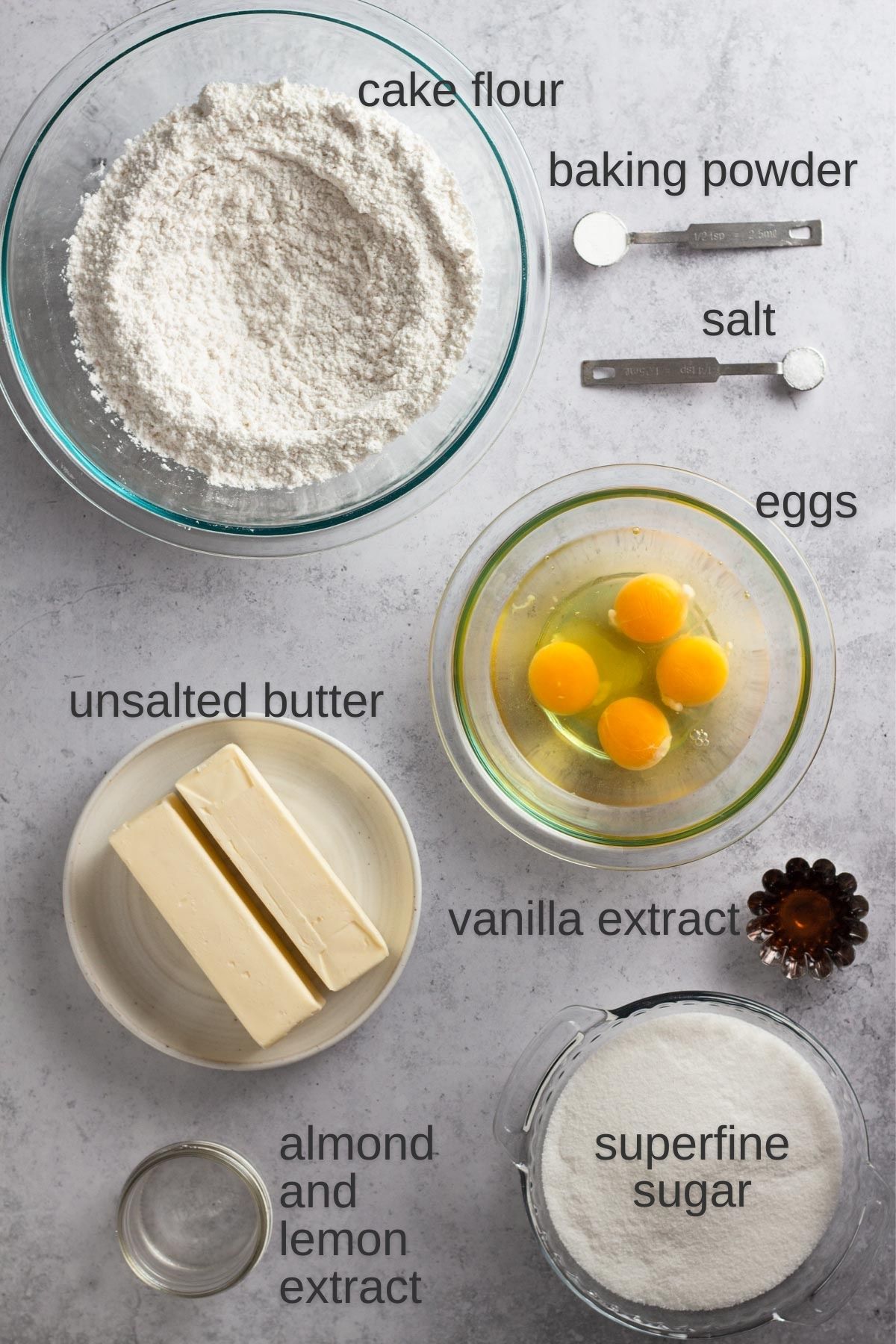
Cake Flour - Cake flour contains less protein than all-purpose flour, making for a more tender cake. Since pound cake is already dense, cake flour keeps the cake from being too heavy. Different brands of cake flour contain different amounts of protein, which will impact the cake’s texture. I recommend Softasilk Bleached Cake Flour, which contains 6.9% protein for this recipe.
Baking Powder - Traditional pound cake does not contain any chemical leavener (baking powder or baking soda) and instead relies on air whipped into the butter to give the cake lift. Adding a bit of baking powder to the batter helps to ensure a proper rise.
Butter - While my grandmother’s recipe called for margarine, I’m just not willing to compromise on using butter. Even though butter is not an exact substitute for margarine in terms of texture, butter always wins in the flavor category. I added a bit of salt with the dry ingredients to make up for using unsalted butter, since margarine contains salt.
Superfine Sugar - Superfine sugar is granulated sugar that has been finely ground, and so it dissolves more easily than regular granulated sugar. You can find superfine sugar in the baking aisle at your local grocery store or you can make your own superfine sugar by processing granulated sugar in the food processor.
Vanilla Extract - A baking staple, pure vanilla extract provides warm flavor.
Almond Extract - Pairing almond extract with vanilla makes for a truly classic flavor that’s absolutely delicious.
Lemon Extract - Lemon extract was a bit of a wild card in my grandma’s recipe, but I love the subtle brightness that it adds to the cake’s flavor.
Eggs - Eggs are what hold the cake batter together. We’ll need half a pound of eggs, which equals just about 4 ½ large eggs. Since we’re aiming for a tender cake, we’ll use the egg white rather than the egg yolk of the half egg.
Step-By-Step Recipe Instructions
PREP
- Preheat oven to 300°F (149°C). Spray a standard loaf pan (8.5 in. x 4.5 in.) with cooking spray and set aside.
MAKE THE BATTER
- In a medium bowl, whisk together flour, baking powder and salt. Set aside.
- In the bowl of a stand mixer using a paddle attachment (or in a large bowl using a handheld electric mixer), cream the butter and sugar by first beating butter on high speed until smooth and creamy (about 30 to 60 seconds) and then adding sugar and beating on medium-high speed until light and fluffy (about 2 minutes). Add the extracts and beat until blended.
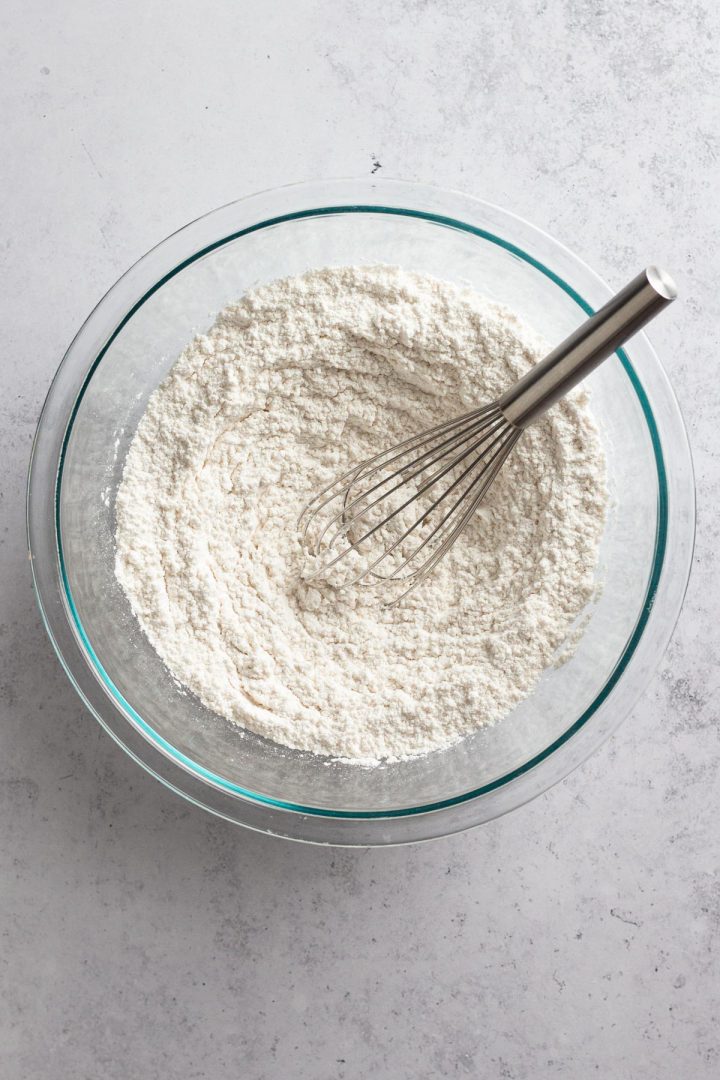
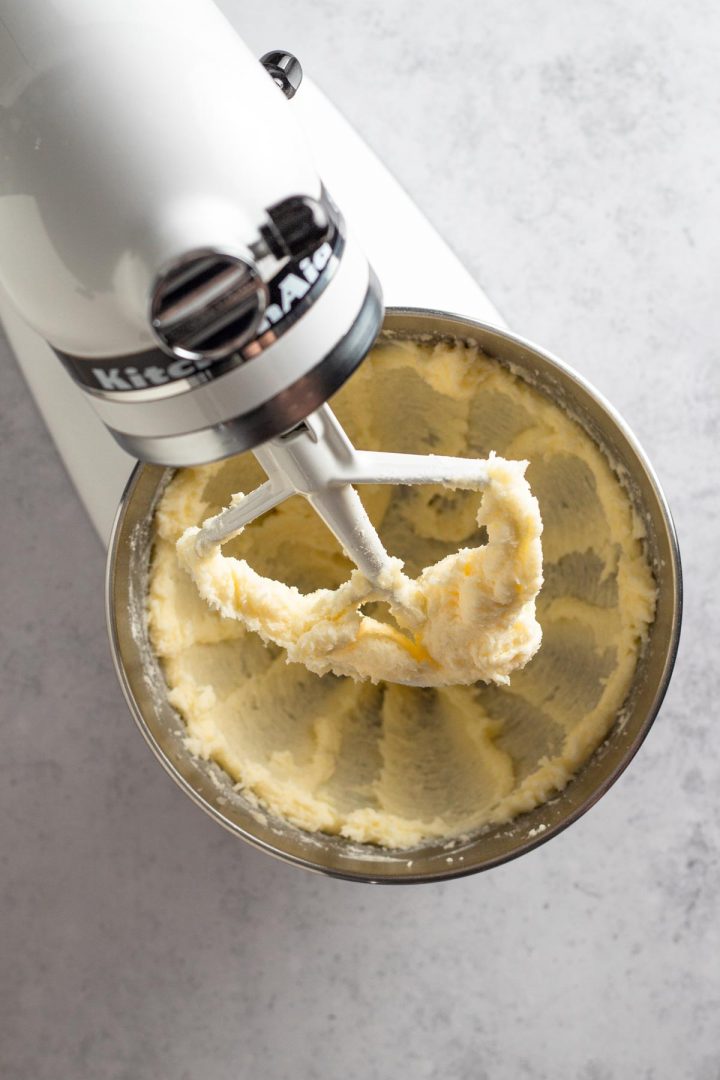
- Slowly add the eggs, one at a time, beating on medium speed until blended. The batter will be very wet with some lumps of butter.
- With the mixer running on low speed, gradually add the flour mixture and stir just until blended.
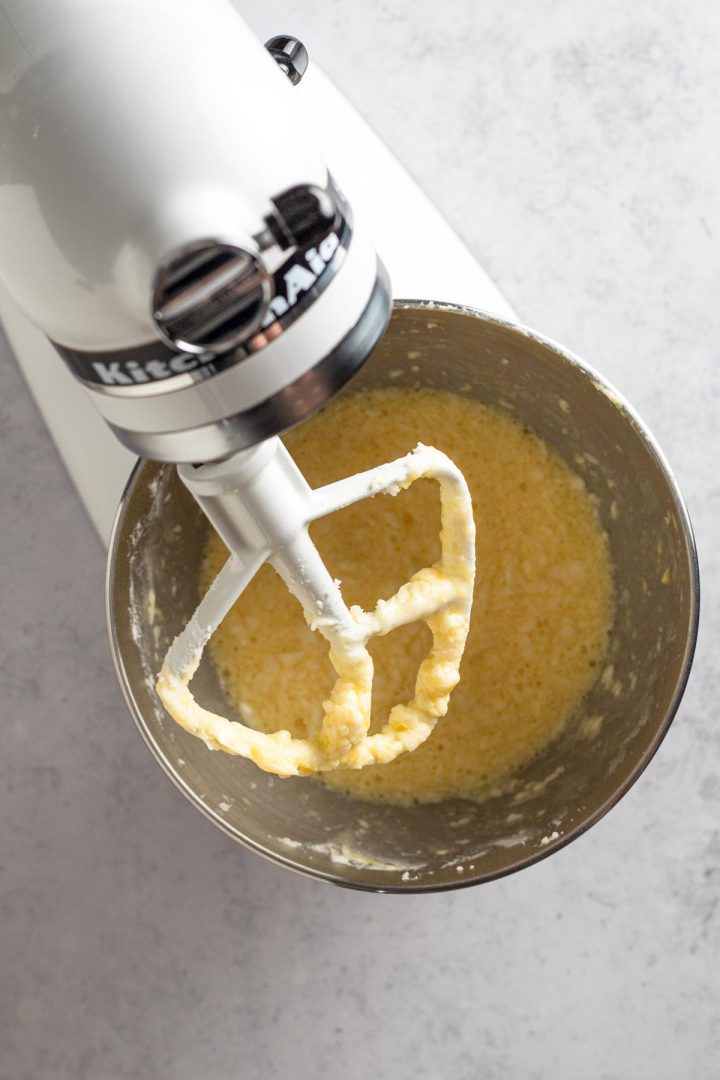
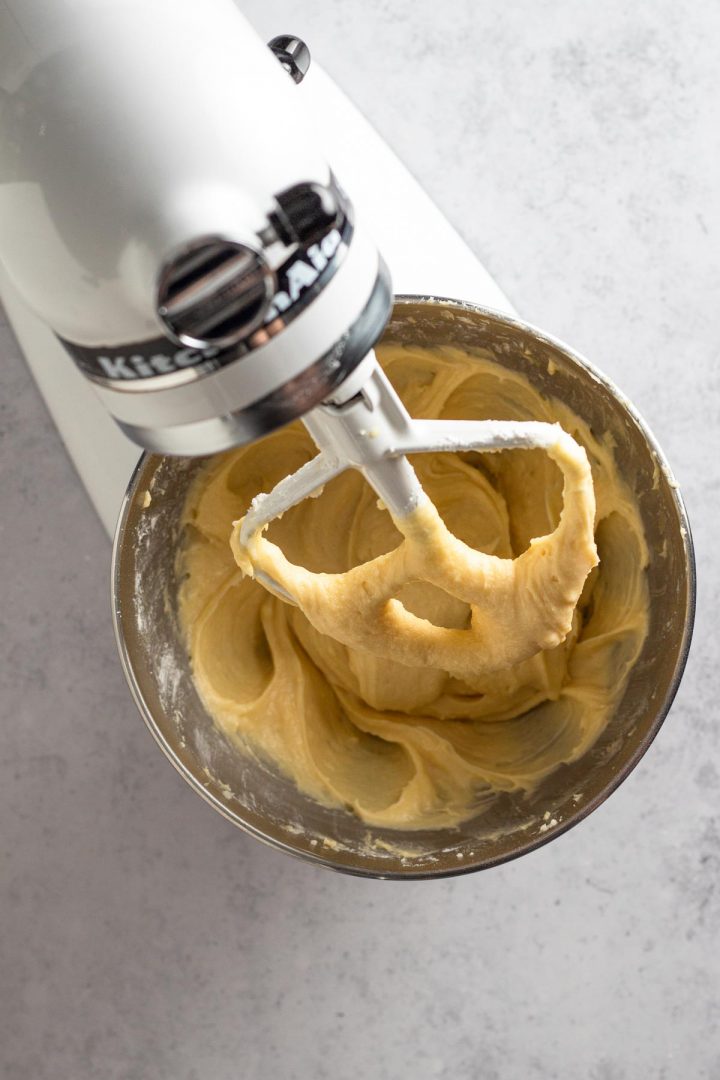
BAKE THE CAKE
- Pour the batter into the prepared pan (A) and bake for 1 hour and 30 minutes or until the cake is domed and golden (B) and a toothpick inserted into the center of the cake comes out clean or with just a few moist crumbs. Let the cake cool in the pan for 10 minutes before carefully turning the pan over to remove the cake. Let the cake cool completely on a wire rack.
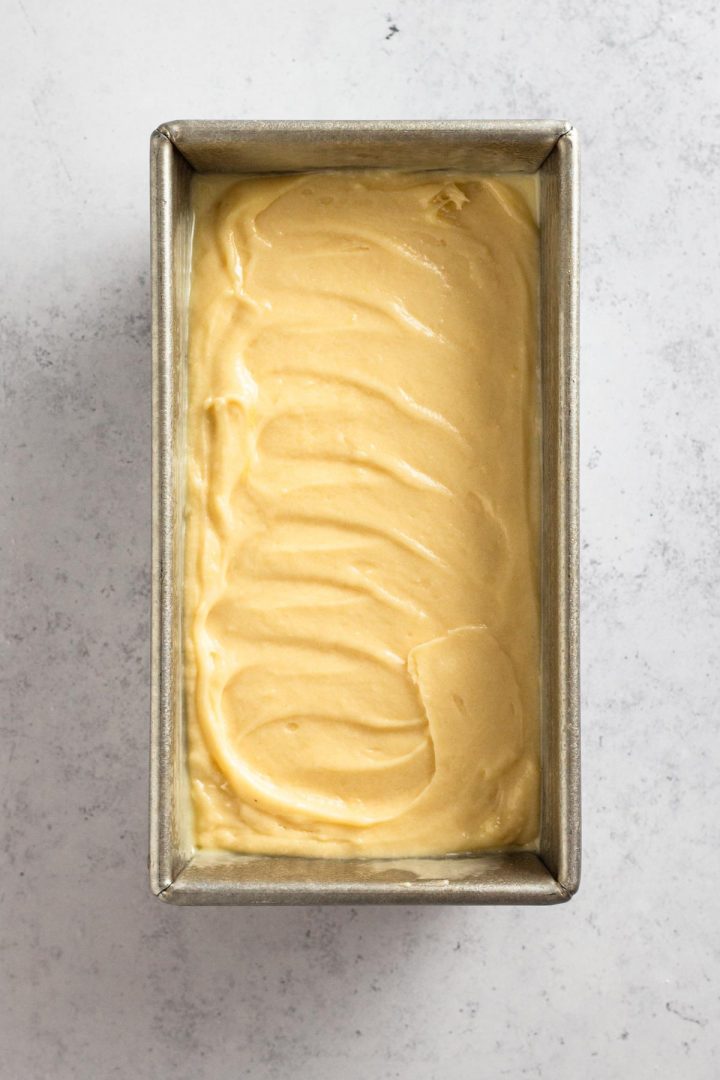
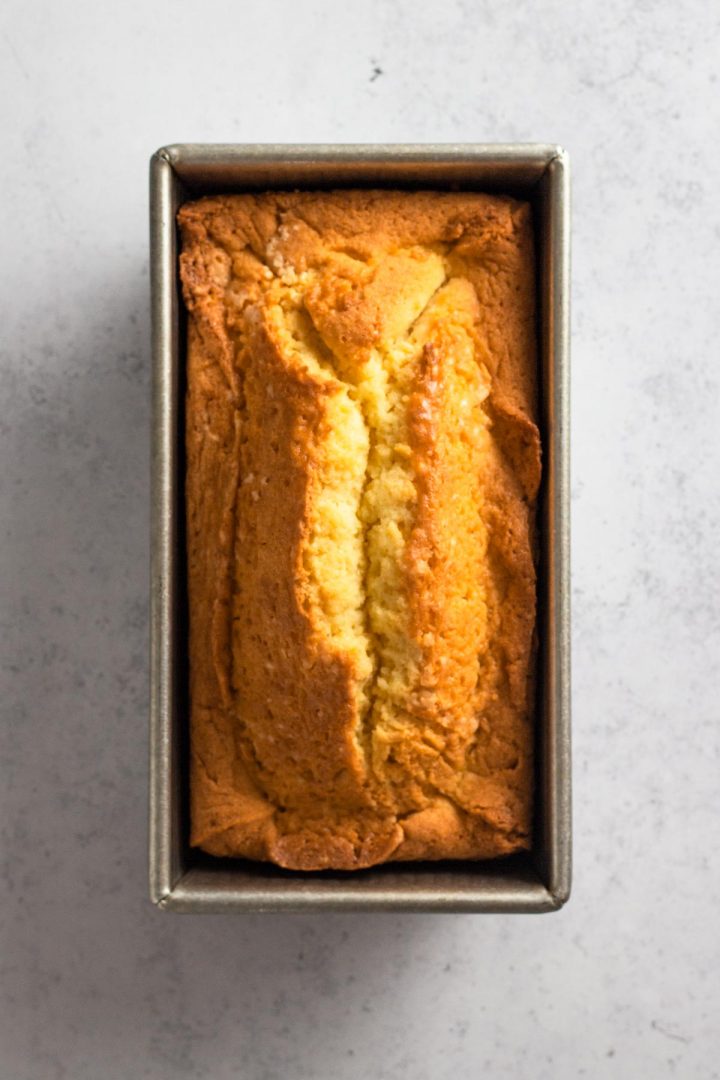
Recipe Tips
Be sure to properly cream the butter and sugar, which adds air to the batter and helps the cake to rise. Be careful not to over-cream the butter and sugar, which can cause the cake to deflate after baking, leading to gummy streaks of compressed cake throughout the loaf.
No that is not a typo, and yes, the cake really does need to bake for about an hour and a half at 300°F (149°C). A long bake time at a low temperature is what gives pound cake’s dense batter time to rise and bake through before the exterior of the cake burns. Don’t try to rush things along with a higher oven temperature.
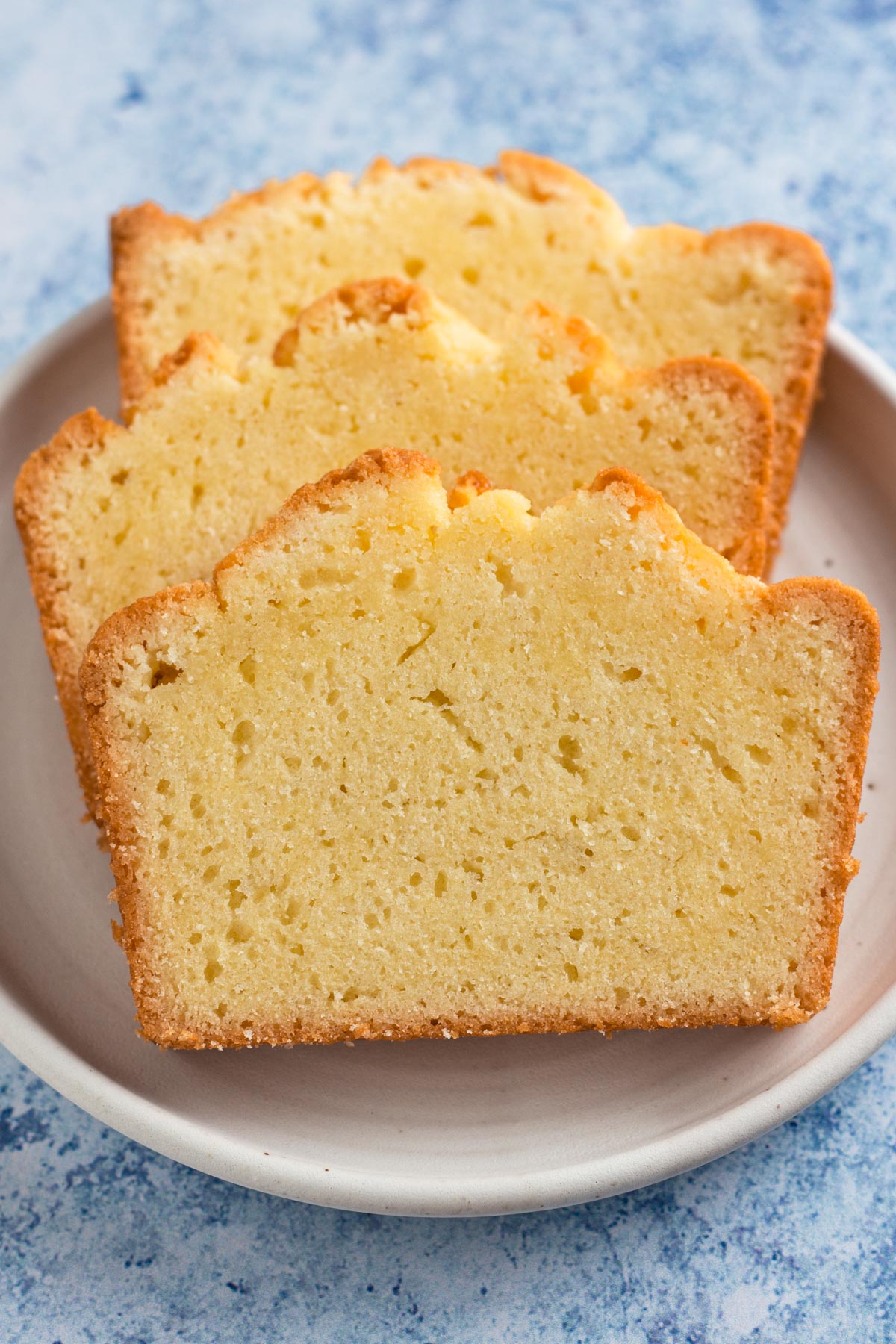
Flavor Variations
Vanilla - Omit the almond and lemon extracts and double the amount of vanilla extract.
Vanilla Bean - Just like vanilla pound cake but with specks of vanilla bean! Omit the almond and lemon extracts and double the amount of vanilla extract.
Almond - Omit the lemon extract, keeping just the almond and vanilla extracts.
Serving Suggestions
There are so many reasons to love pound cake, and its versatility is at the top of that list! Here’s a list of some of my favorite ways to enjoy this classic dessert:
- Use it to make Grilled Strawberry Shortcake
- Top slices with homemade whipped cream and fresh berries
- Dust with powdered sugar
- Drizzle with a simple glaze or melted chocolate
- Spread with jam
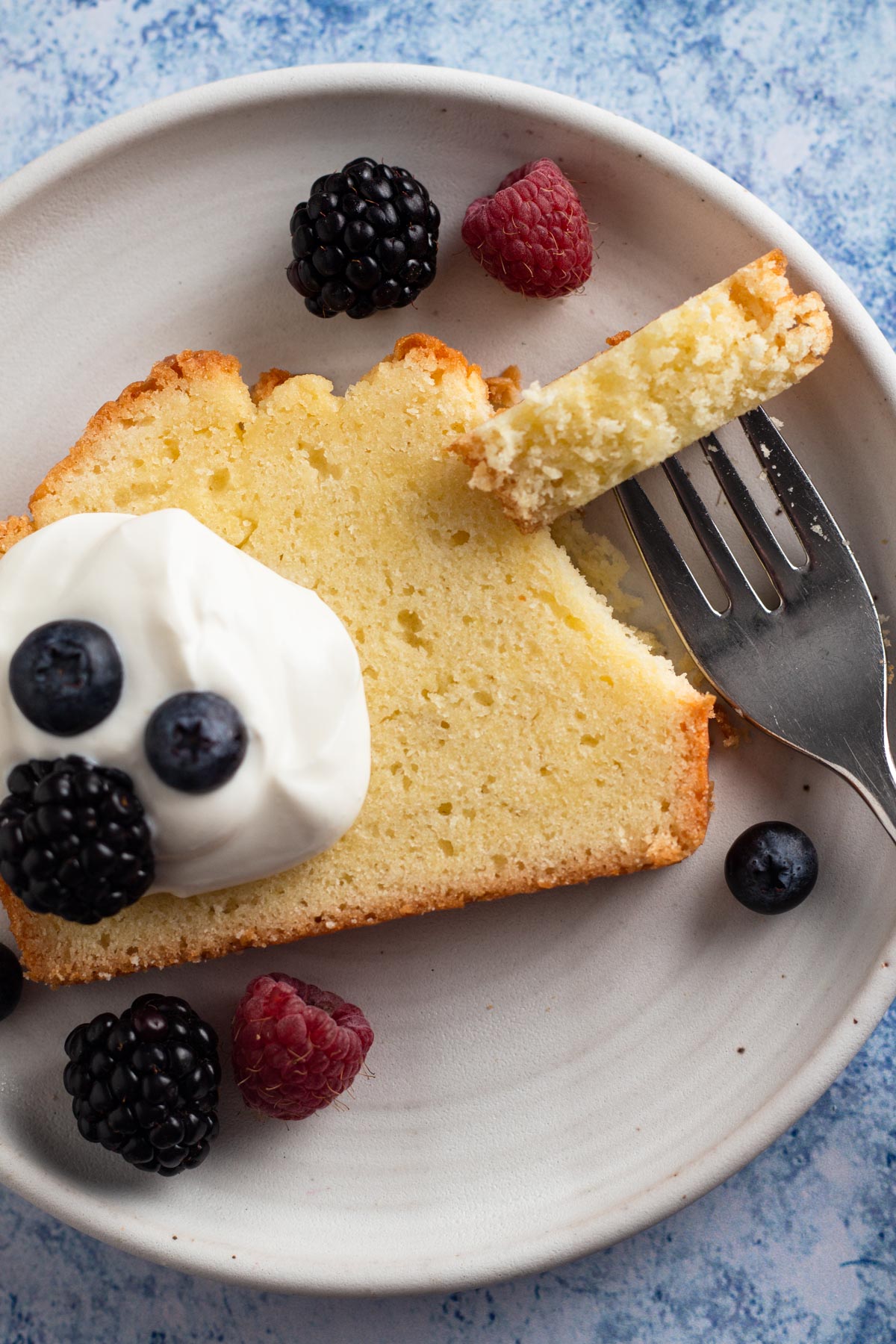
Recipe FAQs
Pound cake gets its name from its traditional ingredient measurements: 1 pound each of flour, butter, sugar, and eggs.
About 9 large eggs equal one pound. Since we’re using half pound measurements to make this loaf cake, we’ll use 4 ½ large eggs (4 eggs plus 1 egg white).
I much prefer pound cake that’s baked with cake flour, since its lower protein content produces a cake with a lighter crumb than a cake baked with all-purpose flour.
Because pound cake batter is so dense, baking the cake low and slow is crucial for the cake to have time to rise without burning the edges of the loaf. While you should always follow the instructions for the recipe you’re using, it’s common to see pound cake recipes with low oven temperatures 300-325°F (149-163°C) and long bake times (at least an hour).
If the pound cake is not under-baked but contains a moist, gummy streak somewhere in the cake (typically along the bottom or through the center of the loaf), the batter was most-likely over-worked. Over-working the batter by over-creaming the butter and sugar or beating too long or too hard after adding the flour will cause the cake to deflate after it’s baked, and the cake sinking down will lead to spots of compacted cake, which appears wet and gummy.
More Simple Cake Recipes
Love this recipe? Please leave a star rating and review on the recipe below! And don't forget to subscribe to Always Eat Dessert for even more simple recipes, baking tips, and inspiration.
Recipe
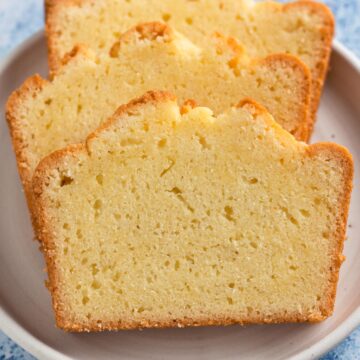
Classic Pound Cake
Ingredients
- ½ pound (2 cups plus 1 Tablespoon) cake flour*, sifted
- ½ teaspoon baking powder
- ¼ teaspoon salt
- ½ pound unsalted butter, room temperature
- ½ pound (1 ¼ cups) superfine sugar**
- ½ teaspoon vanilla extract
- ½ teaspoon lemon extract
- ½ teaspoon almond extract
- ½ pound eggs (about 4 large eggs plus 1 large egg white)
Instructions
- Preheat oven to 300°F (149°C). Spray a standard loaf pan (8.5 in. x 4.5 in.) with cooking spray and set aside.
- In a medium bowl, whisk together flour, baking powder and salt. Set aside.
- In the bowl of a stand mixer using a paddle attachment (or in a large bowl using a handheld electric mixer), cream the butter and sugar by first beating butter on high speed until smooth and creamy (about 30 to 60 seconds) and then adding sugar and beating on medium-high speed until light and fluffy (about 2 minutes). Add the extracts and beat until blended.
- Slowly add the eggs, one at a time, beating on medium speed until blended. The batter will be very wet with some lumps of butter.
- With the mixer running on low speed, gradually add the flour mixture and stir just until blended.
- Pour the batter into the prepared pan and bake for 1 hour and 30 minutes or until the cake is domed and golden and a toothpick inserted into the center of the cake comes out clean or with just a few moist crumbs. Let the cake cool in the pan for 10 minutes before carefully turning the pan over to remove the cake. Let the cake cool completely on a wire rack.


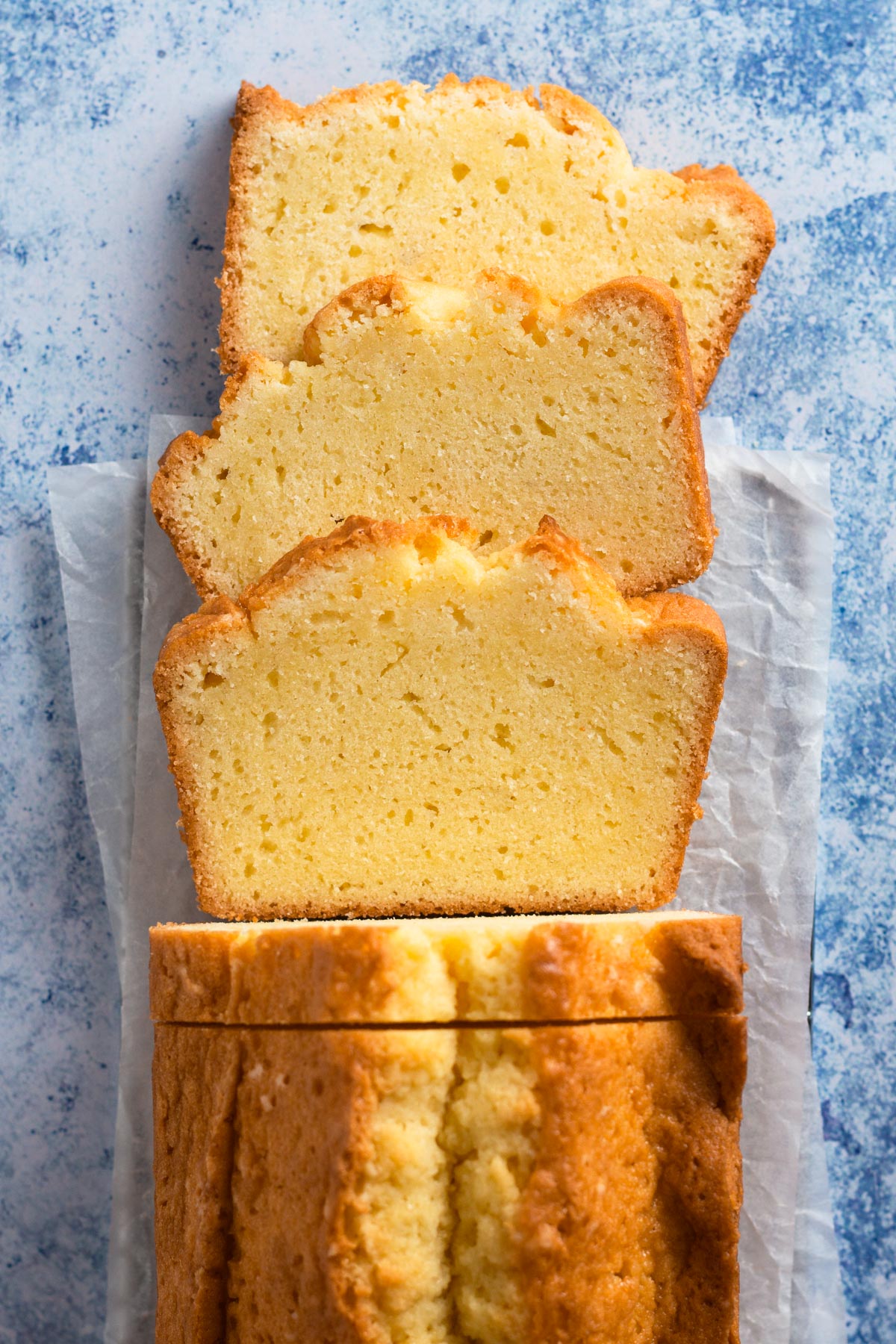
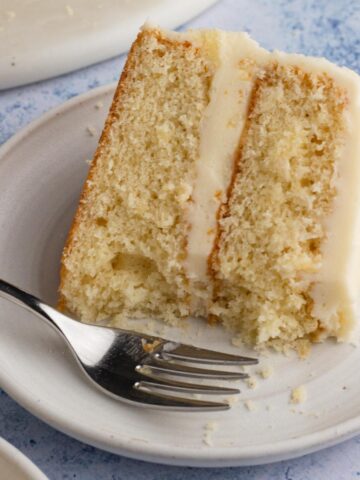
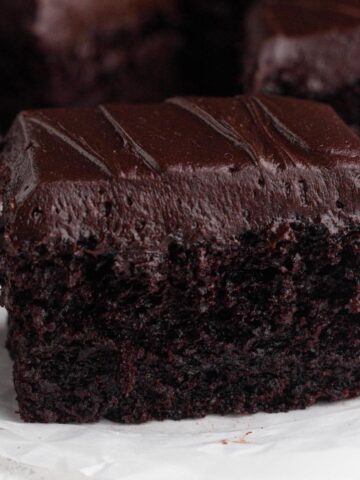
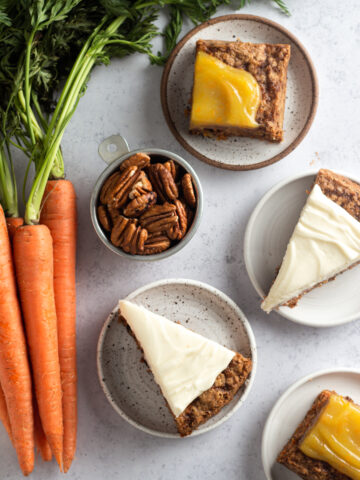
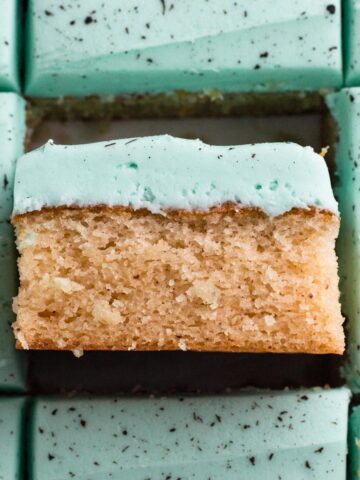
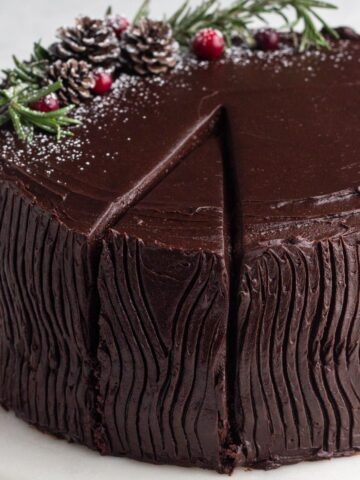
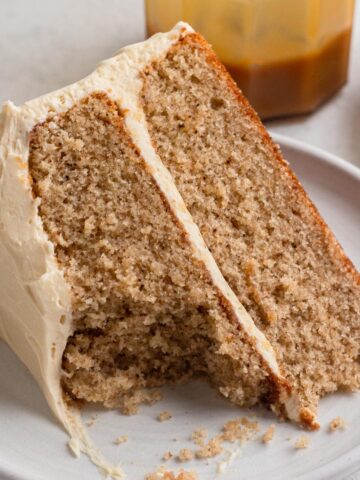


Comments
No Comments